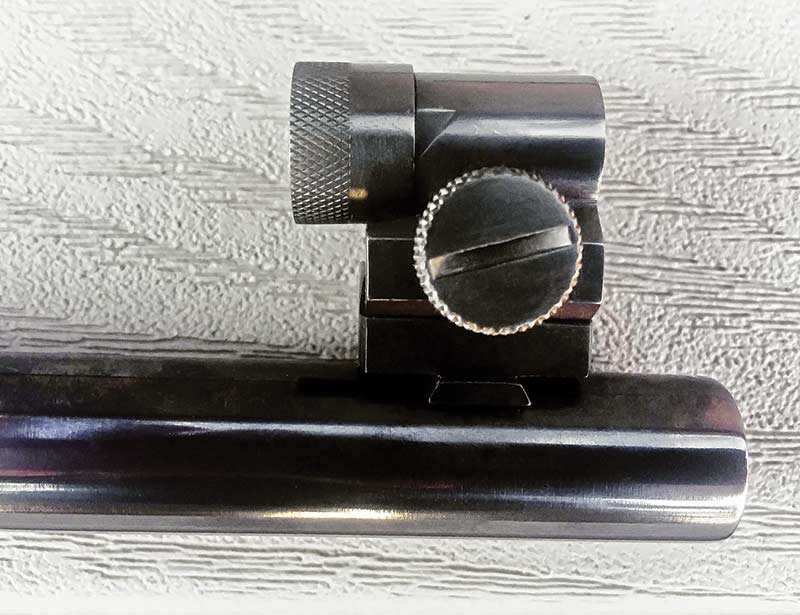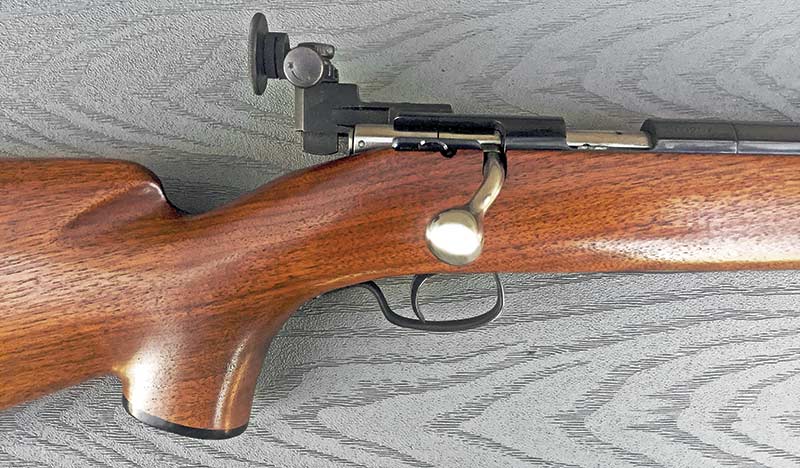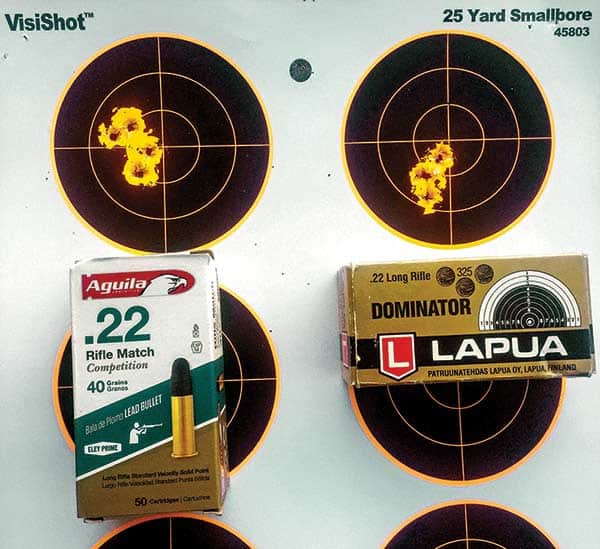Few vintage .22s have the legendary reputation for tack-driving accuracy as Winchester’s Model 52. It was discontinued in 1979, but whether in Sporter or Target trim, it’s still a byword among connoisseurs of bolt-action rimfires. The only drawback, of course, has been its premium price.
The original 1919 sticker for the M52 Sporter was $88.50. That sounds like a whopping good deal until you stop to consider what it translates to in today’s dollars. (Hint: it’s a couple hundred bucks north of a grand).
A Better Mousetrap
What was needed, according to the Winchester brain trust, was a relatively low-cost alternative to the storied M52, one that was lighter, yet accurate enough to allow for competition. So they developed the Model 75, which enjoyed a 20-year production span from 1938 to 1958.
To be sure, Winchester also had another “price” alternative to the Model 52 — the Model 69/69A (1935–1963). The M75’s action was similar, yet the bolt was designed with tighter tolerances and the stock was configured for prone shooting. But these were most certainly not the only bolt-action offerings Winchester rolled out over the years preceding World War II. It isn’t surprising when you consider how popular competitive smallbore rifle shooting was “back in the day.”
R.L. Wilson, in his Winchester, An American Legend, put it this way:
“A flurry of activity in the bolt-action .22 market saw a number of new models brought out by Winchester in the late 1920s and early 1930s. The Models 56, 57, 58, 59, 60, 60A, 67, 68, 69, 677, 72 and 75 all preceded World War II … these rifles intended to claim their fair share of the increasingly competitive .22 bolt-action rimfire market.”
I’m old enough to remember when serious target “.22-ing” was every bit as popular as Cowboy Action or Metallic Silhouette in their respective heydays.
In those pre-Ruger 10/22 days — or make that Remington Nylon 66 days if you’re really old — I can recall shooting 50-foot smallbore targets from prone on a padded mat with some fairly hefty bolt actions when I was a kid. So I immediately had a twinge of nostalgia when hefting the 8.5-lb. Model 75 Target.
This particular specimen is owned by a shooting buddy, John Wightman. It features marvelous quarter-minute click-adjustable Redfield sights — specifically a Model 75 Micrometer rear and a M63 Globe front. These, I was to discover, required a bit of re-familiarization.
The Model 75 Target sports a 28″ barrel and an OAL of close to 45″. It was also offered at one time with the Lyman 77 front sight and 58E rear. Like its pricier stablemate, the Model 52, the Model 75 could also be had in a lighter, shorter barreled (24″) Sporter configuration.
John, like any sensible collector of vintage .22s, had scoured the market for spare magazines and had both the flush-fitting 5-shot and extended 10-shot models. These are expensive items, running around $70 per copy or more — although this isn’t out of line if you’re hunting spare magazines for classic Winchester rimfires.
And speaking of price, expect starting auction bids for replacement Lyman or Redfield vintage target sights be semi-stratospheric.
Range Time
We tried to mix up our test ammo menu between bulk pack bargain stuff, high-velocity 36-grain HPs, and standard velocity 40-grain match brands. The list included Aguila Rifle Match Competition and Super Extra HP, Lapua Dominator, Winchester Super-X Power Point, Sellier and Bellot Club and CCI Mini Mag HP.
At 25 yards virtually everything stayed under an inch for 5 shots, with the Lapua Dominator consistently clustering under a half-inch. We then subjected our aging eyes to the aperture sights at an optimistic (for us) full 50 yards with the Lapua and still beat the 1″ mark.
One thing should be mentioned in passing — the trigger was a fabulously crisp 2 lbs. It’s adjustable, but what we were working with was far removed from what were later referred to as “lawyer triggers.”
We were pretty satisfied with the results, seeing as how we’ve been spoiled with scope reticles for most of our adult lives. And those of us who’ve stuck with iron have generally used ghost-ring setups with far more generous apertures than the pinprick-sized hole on a serious target .22.
There’s a definite learning curve to shooting well by centering a 3″ bullseye in a circular aperture (front and rear) and “keeping the edges even” while breaking the shot.
One trick we did learn in coping with the micrometer sights: If your eyes are “well-aged,” a magnifying glass is a godsend in making adjustments and keeping track of those hashmarks. Once you’re locked down, those old sights are pretty much bombproof.
One other caveat — during extended shooting sessions, the occasional scrub with a brush is sometimes needed to prevent sticky chambering from waxy bullet lube buildup.
Winchester’s Model 75 is a wonderfully crafted walnut and blued-steel artifact from what could be described as an era of “full-size, target grade, receiver-sighted bolt-action .22s.”




